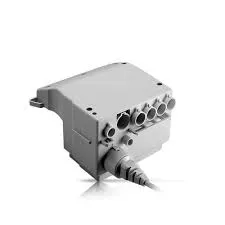Self-Amalgamating Tape Temperature Resistance and Applications
Self-amalgamating tape, also known as self-fusing tape, is a highly versatile material often used in various applications, particularly in electrical and plumbing fields. A significant aspect of this tape is its temperature resistance, which plays a crucial role in determining its usability. This article will explore the characteristics of self-amalgamating tape, its resistance to temperature variations, and its applications in different environments.
Self-Amalgamating Tape Temperature Resistance and Applications
Temperature resistance is a vital attribute of self-amalgamating tape, as it needs to perform effectively in various environments. Generally, this tape can endure temperature ranges from -60°C (-76°F) to around 260°C (500°F), although specific temperature limits may vary based on the manufacturer and tape composition. This broad range of temperature resistance ensures that the tape can maintain its integrity in both extreme cold and heat, making it suitable for applications in a wide array of industries.
self amalgamating tape temperature

In electrical applications, self-amalgamating tape is often used to insulate wires and cables. Its ability to withstand high temperatures makes it perfect for use in environments where other insulation materials may fail. For example, in electrical transformers and motors that generate significant heat, self-amalgamating tape can be applied to safeguard connections and reduce the risk of short circuits caused by wear and tear over time.
Another common application of self-amalgamating tape is in plumbing repairs. Leaky pipes, especially those carrying hot water, can benefit from the tape’s moisture resistance and temperature resilience. By wrapping the tape around the leak, a temporary but reliable seal can be achieved, helping to prevent further water damage until a more permanent solution can be implemented.
Additionally, self-amalgamating tape is utilized in automotive applications, where it is often used to wrap wiring harnesses. The automotive environment exposes wires to heat from the engine and other components, making the high-temperature tolerance of self-amalgamating tape an essential property. This tape can also provide a layer of protection against abrasion and environmental factors, prolonging the life of the electrical systems within vehicles.
In conclusion, self-amalgamating tape is an invaluable tool in various industries, primarily due to its impressive temperature resistance and self-fusing properties. Its ability to perform efficiently in both high and low-temperature environments enables it to thrive in critical applications, from electrical insulation to plumbing repairs. As technology advances, the features and formulations of self-amalgamating tape will likely continue to evolve, expanding its usability across even more fields. Whether in a home, workshop, or industrial setting, self-amalgamating tape remains a dependable choice for professionals and DIY enthusiasts alike.
-
XIANGFAN Rubber Tape-Ultimate Solutions for All Your Insulation NeedsNewsJun.24,2025
-
XIANGFAN Rubber Tape-Protection for Industrial and Residential ApplicationsNewsJun.24,2025
-
XIANGFAN Rubber Tape: Superior Safety and Sealing for Demanding EnvironmentsNewsJun.24,2025
-
XIANGFAN Rubber Tape: Reliable Solutions for Every Electrical ChallengeNewsJun.24,2025
-
XIANGFAN Electrical & Industrial Tape: Powering Reliability Across IndustriesNewsJun.24,2025
-
XIANGFAN Electrical & Industrial Tape: Excellence in Every ApplicationNewsJun.24,2025
